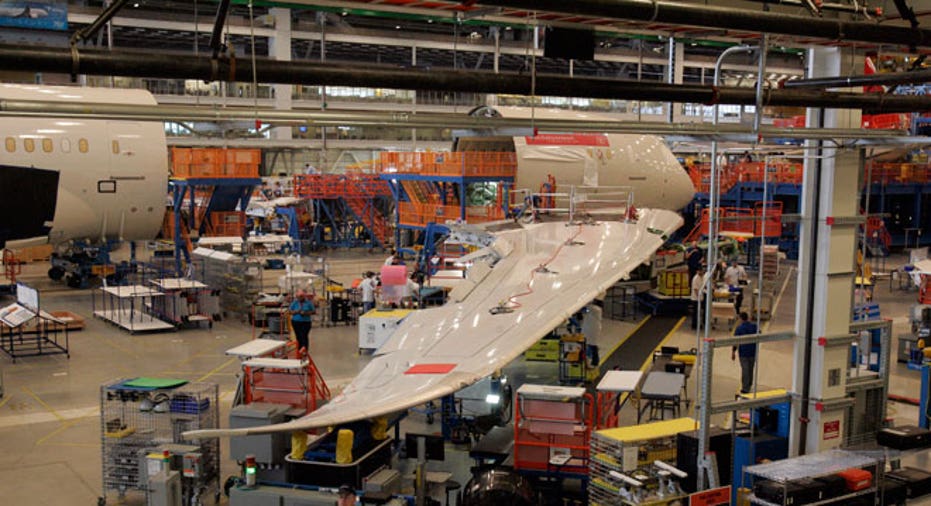Boeing, U.S. Officials Investigate Why Dreamliner Engine Spewed Debris

Boeing (NYSE:BA) and U.S. safety officials are investigating the cause of an engine spark that led to a grass fire when engines in the jet maker's new 787 Dreamliner spewed out debris this weekend during a test flight in Charleston, S.C.
The National Transportation and Safety Board along with the jet maker and General Electric (NYSE:GE) are probing the source of debris that fell from the GEnx engines in a newly-built 787 that had ultimately been destined for Air India's fleet.
An NTSB spokesperson said the safety board is gathering information on the incident that shut Charleston’s main runway for more than an hour on Saturday but has not at this point opened a formal investigation.
Boeing, which confirmed that it is “working closely” with the NTSB on the July 28 incident, said it is “unaware of any operational issue that would present concerns about the continued safe operation of in-service 787s powered by GE engines.”
“Should the investigation determine a need to act, Boeing has the processes in place to take action and will do so appropriately,” Boeing said in an emailed statement.
General Electric spokesman Rick Kennedy said GE is "working aggressively to move the engine involved in the incident" to its Cincinnati, Ohio, headquarters for "a full tear-down of the engine."
GEnx engines first went into service in late 2011 on the new Boeing 747-8. Earlier this year, they also entered service on the Dreamliner with Japan Air Lines. Today, there are about 80 GEnx engines in service that have together clocked more than 125,000 flight hours.
"The engines have done extremely well without any in-flight incidents," Kennedy said, adding that the company is not aware of "operational issues that would affect the continued safe flight of aircraft powered by these engines."
A personal familiar with the investigation told The Wall Street Journal that the GE engine involved in the fire showed no signs of damage to the large front fan. Kennedy confirmed to FOXbusiness.com that the debris was contained by the casing that surrounds the engine’s hot core and then ejected from the back of the engine.
A person close to the investigation also ruled out that a foreign object was sucked into the engine, according to the Journal. That has in the past damaged engines and forced emergency landings, such as when US Airways Flight 1549 landed in the Hudson River shortly after takeoff in 2009 after striking a flock of geese.
The accident comes just five days after Dreamliner jets owned by All Nippon Airways were grounded because of corrosion found in jet engines during testing. The twin-aisle aircraft, which seats up to 290 passengers, made its first passenger flight in October with the Japanese carrier.
Boeing had said that problems related to the All Nippon Airways jets were caused by changes to a manufacturing process. The airline began returning those jets to service shortly thereafter.
The Dreamliner, Boeing’s new fuel-efficient highly-desired jumbo jet, has been plagued by problems since first launching in 2011. All Nippon Airways, which owns 11 of the latest-generation 787s, has reported problems with the landing gear as well.
The Chicago-based jet maker, which has received more than 845 orders for the Dreamliner, also delayed deliveries earlier this year for problems related to the sheets of laminated composite materials that make up the plane’s body.